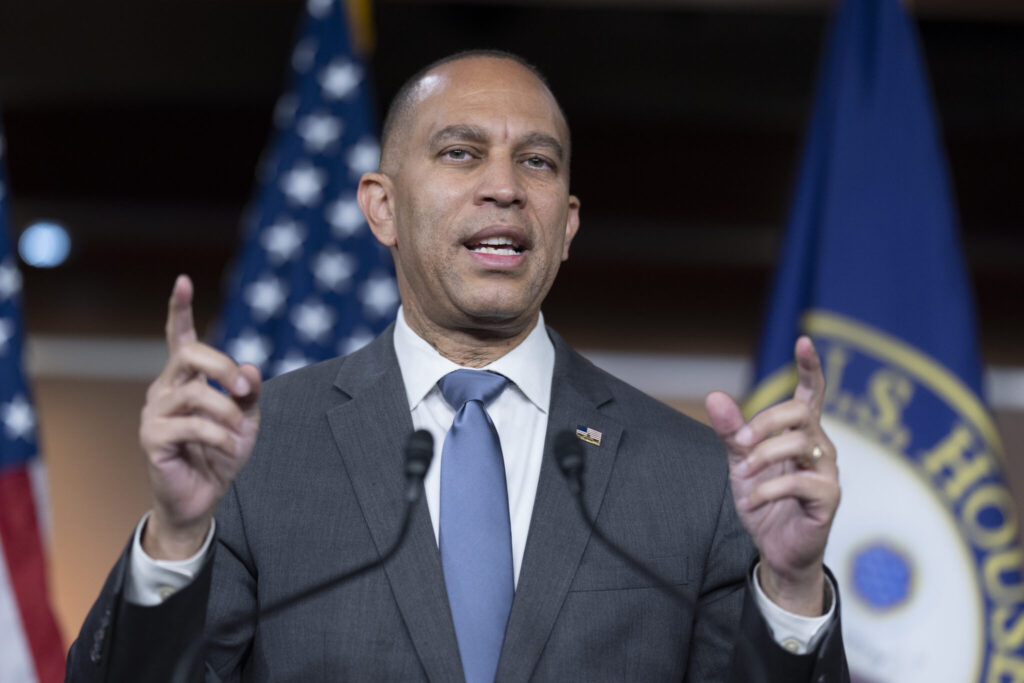House elections 2024/ GOP majority/ House stalemate/ partisan polarization/ Mike Johnson speaker/ Newslooks/ WASHINGTON/ J. Mansour/ Morning Edition/ The 2024 House elections resulted in a near stalemate, with Republicans retaining a thin majority and Democrats making modest gains. With partisan divides entrenched and few competitive districts, governing effectively will be a significant challenge for House Speaker Mike Johnson and the GOP, especially as infighting persists.

House Elections Stalemate: Quick Looks
- Republican Majority Intact: The GOP narrowly retained control of the House, despite modest Democratic gains.
- Minimal Change Nationwide: Only 8 incumbents lost, with both parties flipping seven seats.
- Gerrymandering’s Impact: Over 85% of districts are considered “safe,” limiting voter influence.
- Key Republican Wins: Gains in Pennsylvania and redistricted North Carolina secured the GOP majority.
- Challenges Ahead: Thin margins and internal GOP divisions could hinder legislative progress.
House Elections Leave Republicans With Slim Majority 218-212 Seats
Deep Look
The 2024 House elections have left Republicans clinging to a razor-thin majority, reflecting entrenched political divides in the U.S. While Democrats made modest gains, the overall composition of the House remains virtually unchanged, continuing a trend of partisan polarization and limited electoral swings.
The Results: Status Quo Prevails
Despite Donald Trump’s presidential victory and strong Republican turnout, the House elections produced little change in overall control. Republicans and Democrats each flipped seven seats, with just eight incumbents losing nationwide. This outcome underscores the challenges of shifting power in a chamber heavily influenced by gerrymandered districts and political polarization.
“The people’s House barely reflects the will of the people,” said David Peters, a senior fellow at FairVote.
While Democrats made inroads in New York and flipped redistricted seats in Louisiana and Alabama, Republicans countered with gains in Pennsylvania and North Carolina, where GOP-led redistricting played a decisive role.
Gerrymandering and Polarization Shape the Map
The latest redistricting cycle following the 2020 census has entrenched partisan control in most districts. FairVote estimates that 85% of House seats are now considered “safe,” the highest in two decades. This lack of competitiveness has made it harder for voters to shift the balance of power, even when public sentiment changes.
“The consequences are stark,” said Peters. “Voters have very little ability to influence the direction of the House, leading to entrenched polarization.”
This dynamic has also contributed to fewer bipartisan efforts, as lawmakers in “safe” districts are more concerned about primary challenges than general election competitiveness.
Key Players and Districts
House Speaker Mike Johnson will lead the GOP’s efforts in the new Congress, but the party’s slim majority presents significant challenges. Republicans relied on critical wins in Pennsylvania and North Carolina to retain control, while Democrats’ strongest showing was in New York, where they flipped three seats.
Republicans aim to use their majority to advance tax cuts, stricter immigration enforcement, and regulatory rollbacks. However, with a slim margin, nearly any member can block legislation, leaving the GOP vulnerable to internal dissent.
“Every single vote will count,” Johnson warned, emphasizing the need for party unity.
Republican Divisions Persist
The GOP faces internal challenges as it attempts to govern. Infighting plagued the previous Congress, and cracks are already appearing in the party’s unity. Johnson’s nomination as speaker for the new Congress is a step toward stability, but debates over internal rules—such as the ability of a small faction to trigger a speaker’s removal—remain contentious.
Republicans must also contend with members who prioritize ideological purity over legislative compromise, potentially hampering efforts to pass key bills.
“It’s going to be very difficult for Congress to get anything done,” said Rob Speel, a political science professor at Penn State Behrend.
Democratic Gains and Challenges
While falling short of reclaiming the House, Democrats have touted their modest gains as a silver lining in a challenging political environment. House Democratic Leader Hakeem Jeffries noted that despite Trump’s success in battleground states, Democrats increased their number of seats.
“Notwithstanding the adverse political environment… Democrats will actually have increased seats,” Jeffries said.
Looking Ahead: Governance in a Divided Congress
With Republicans holding the House, Democrats controlling the Senate, and Trump in the White House, bipartisan cooperation will likely be rare. Instead, Republicans are expected to pursue a partisan agenda through budget reconciliation, a special process that bypasses Senate filibusters.
Key GOP priorities include:
- Extending tax cuts.
- Increasing border security and immigration enforcement.
- Rolling back federal regulations.
Still, the party’s slim majority means any internal division could derail these efforts, leaving significant legislation stalled.







